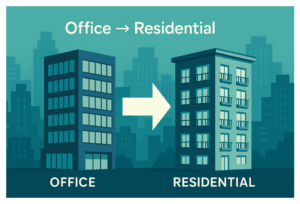Join Us in our Podcast - 11-Step Guide to Buying a Real Estate Bank Note
Buying a real estate bank note can be a profitable investment if done correctly. Here is a simplified 11-step process to help guide you through the process of purchasing a bank note:
Step 1: Understand What You’re Buying
Before jumping into purchasing a bank note, it’s essential to understand what a real estate bank note is. A bank note is essentially a loan agreement secured by a piece of real estate. You are buying the right to receive mortgage payments, and in case of default, you may have the right to take possession of the property through foreclosure.
Step 2: Decide Between Performing and Non-Performing Notes
There are two main types of real estate bank notes:
- Performing Notes: The borrower is current on their payments, providing you with a consistent stream of income.
- Non-Performing Notes: The borrower has defaulted on the loan, which may give you the option to restructure the loan or foreclose on the property.
Determine your risk tolerance and investment strategy before deciding which type of note to purchase.
Step 3: Research the Market
Begin by researching the real estate note market to get a feel for pricing, yields, and what type of notes are available. There are several online marketplaces, brokers, and even banks that sell real estate notes. You can also check with specialized firms that deal with distressed or non-performing assets.
Step 4: Conduct Due Diligence on the Note
Thorough due diligence is critical when purchasing a note. You need to investigate:
- The Borrower’s Payment History: Are they likely to continue making payments?
- Property Condition: If the borrower defaults, the property becomes your collateral.
- Note Terms: Review the interest rates, repayment schedule, and any penalties for non-payment.
- Title Search: Ensure there are no other claims or liens on the property.
Step 5: Price Negotiation
Once you’ve found a note you want to buy, you’ll need to negotiate the price with the seller. Bank notes can be purchased at a discount—especially non-performing notes—since there’s more risk involved. Your goal is to acquire the note at a price that gives you a reasonable return based on the risk you’re assuming.
Step 6: Draft a Purchase Agreement
After settling on a price, the next step is to draft a purchase agreement. This legally binding contract will outline the terms of the transaction, including:
- Purchase price
- Details of the bank note (terms, property address, etc.)
- Closing conditions
- Timeline for payment and transfer
Step 7: Fund the Purchase
Once the agreement is finalized, you’ll need to provide the funds to complete the purchase. Many investors use cash, but other financing methods like lines of credit or partnerships with other investors can also be an option. Be sure that your financing is ready before entering into any agreement to avoid delays.
Step 8: Transfer Ownership of the Note
After payment is made, the ownership of the note is transferred to you. This process involves completing legal documents such as an Assignment of Mortgage or Deed of Trust (depending on the state), which officially transfers the rights of the mortgage from the seller to you.
Step 9: Record the Assignment
Once ownership is transferred, you must record the assignment of the note with the local county recorder’s office. This ensures that you are legally recognized as the new owner of the note, and it protects your interest in the property.
Step 10: Set Up Loan Servicing
Now that you own the note, you need to decide how to service the loan. This can be done either by:
- Hiring a Loan Servicing Company: They will handle receiving payments, sending statements, and tracking the loan balance.
- Self-Managing: If you prefer, you can manage the payments and communication with the borrower yourself, but this can be time-consuming.
Step 11: Manage Your Investment
After everything is set up, it’s time to manage the note. If you bought a performing note, you’ll collect payments and monitor the borrower’s performance. If you bought a non-performing note, you’ll need to either work with the borrower to restructure the loan or pursue foreclosure to recover the property.
Make sure to stay on top of the borrower’s performance, market conditions, and any potential issues with the property that could impact your investment.
Final Thoughts
Buying a bank note can be a highly rewarding investment if you follow these steps carefully. It’s crucial to do your due diligence, seek legal advice when necessary, and fully understand the risks and rewards associated with real estate note investing.




